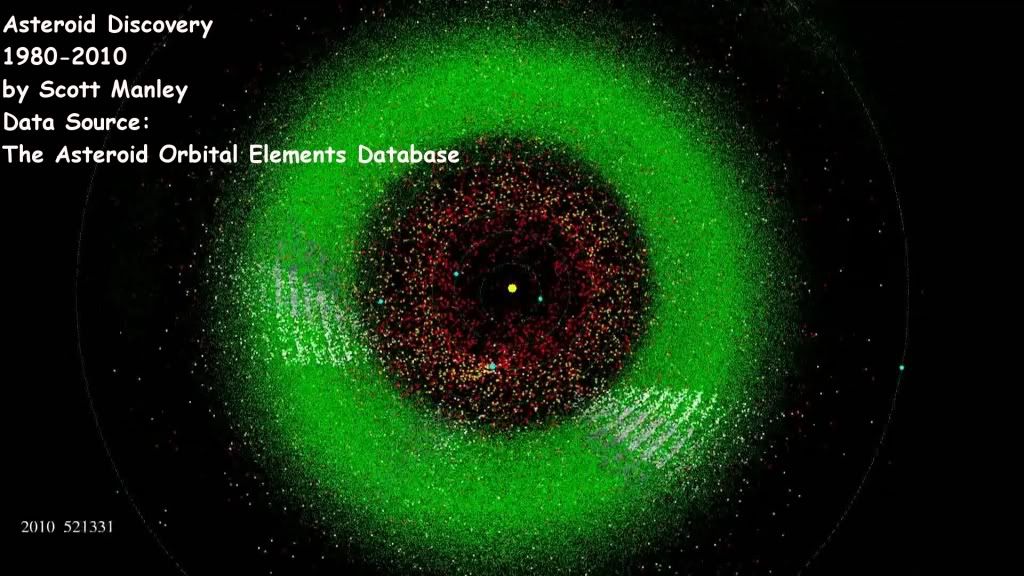
**For some reason, the full frame won't embed here. Go to YouTube for the full experience.
This video by Scott Manley gives me an opportunity to point out that there are resources just waiting to be exploited by mankind, if we only had the gumption to go get it. See some of what people are thinking at PERMANENT.
There are an estimated One Billion (!!!) undiscovered asteroids larger than 300 feet in diameter in the Asteroid Belt.
From the Video Description:
View of the solar system showing the locations of all the asteroids starting in 1980, as asteroids are discovered they are added to the map and highlighted white so you can pick out the new ones.
The final colour of an asteroids indicates how closely it comes to the inner solar system.
Earth Crossers are Red
Earth Approachers (Perihelion less than 1.3AU) are Yellow
All Others are Green
Notice now the pattern of discovery follows the Earth around its orbit, most discoveries are made in the region directly opposite the Sun. You'll also notice some clusters of discoveries on the line between Earth and Jupiter, these are the result of surveys looking for Jovian moons. Similar clusters of discoveries can be tied to the other outer planets, but those are not visible in this video.
As the video moves into the mid 1990's we see much higher discovery rates as automated sky scanning systems come online. Most of the surveys are imaging the sky directly opposite the sun and you'll see a region of high discovery rates aligned in this manner.
At the beginning of 2010 a new discovery pattern becomes evident, with discovery zones in a line perpendicular to the Sun-Earth vector. These new observations are the result of the WISE (Widefield Infrared Survey Explorer) which is a space mission that's tasked with imaging the entire sky in infrared wavelengths.
Currently we have observed over half a million minor planets, and the discovery rates snow no sign that we're running out of undiscovered objects.
Orbital elements were taken from the 'astorb.dat' data created by Ted Bowell and associates at http://www.naic.edu/~nolan/astorb.html
Music is 'Transgenic' by Trifonic.






























0 comments :
Post a Comment